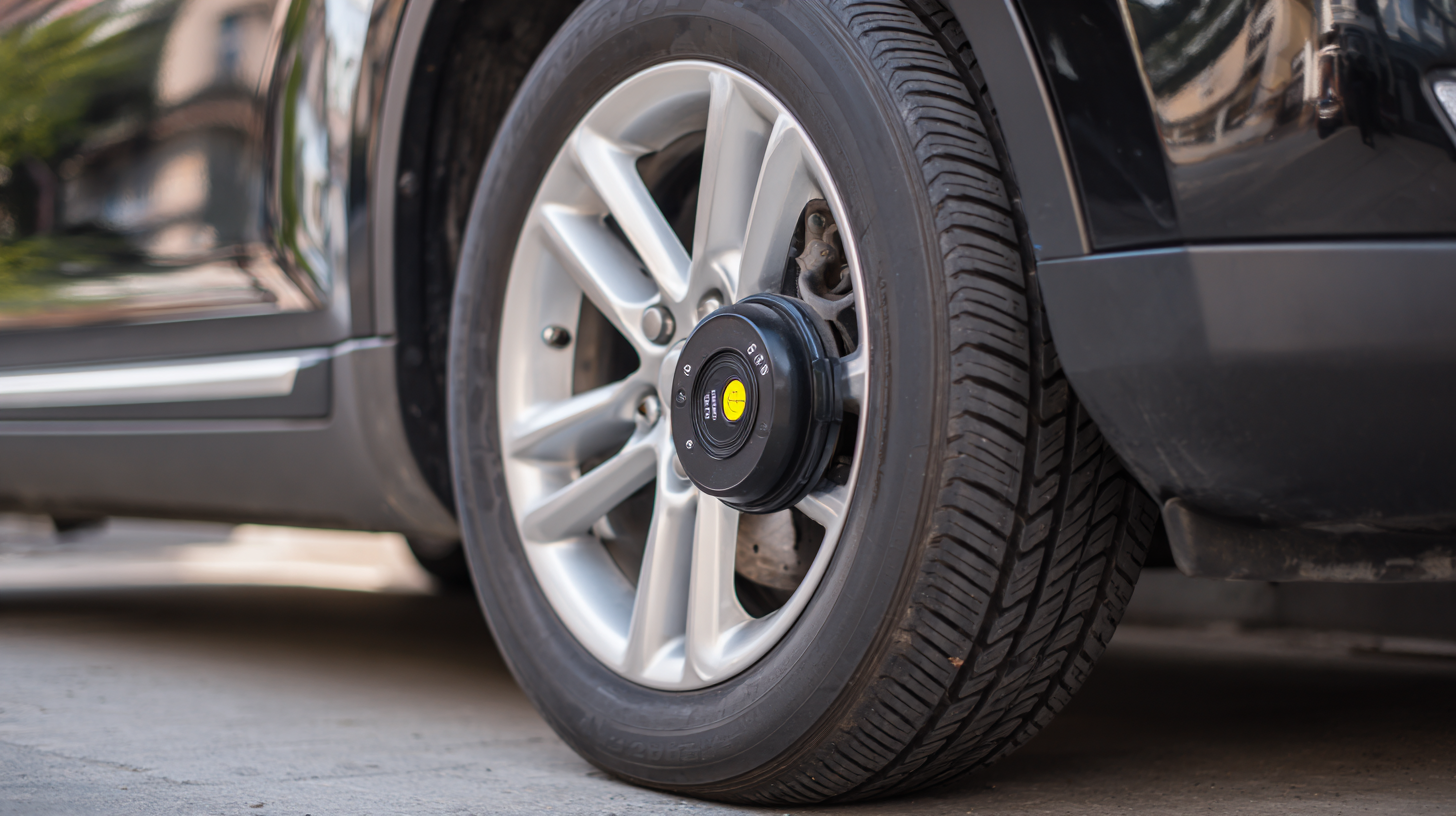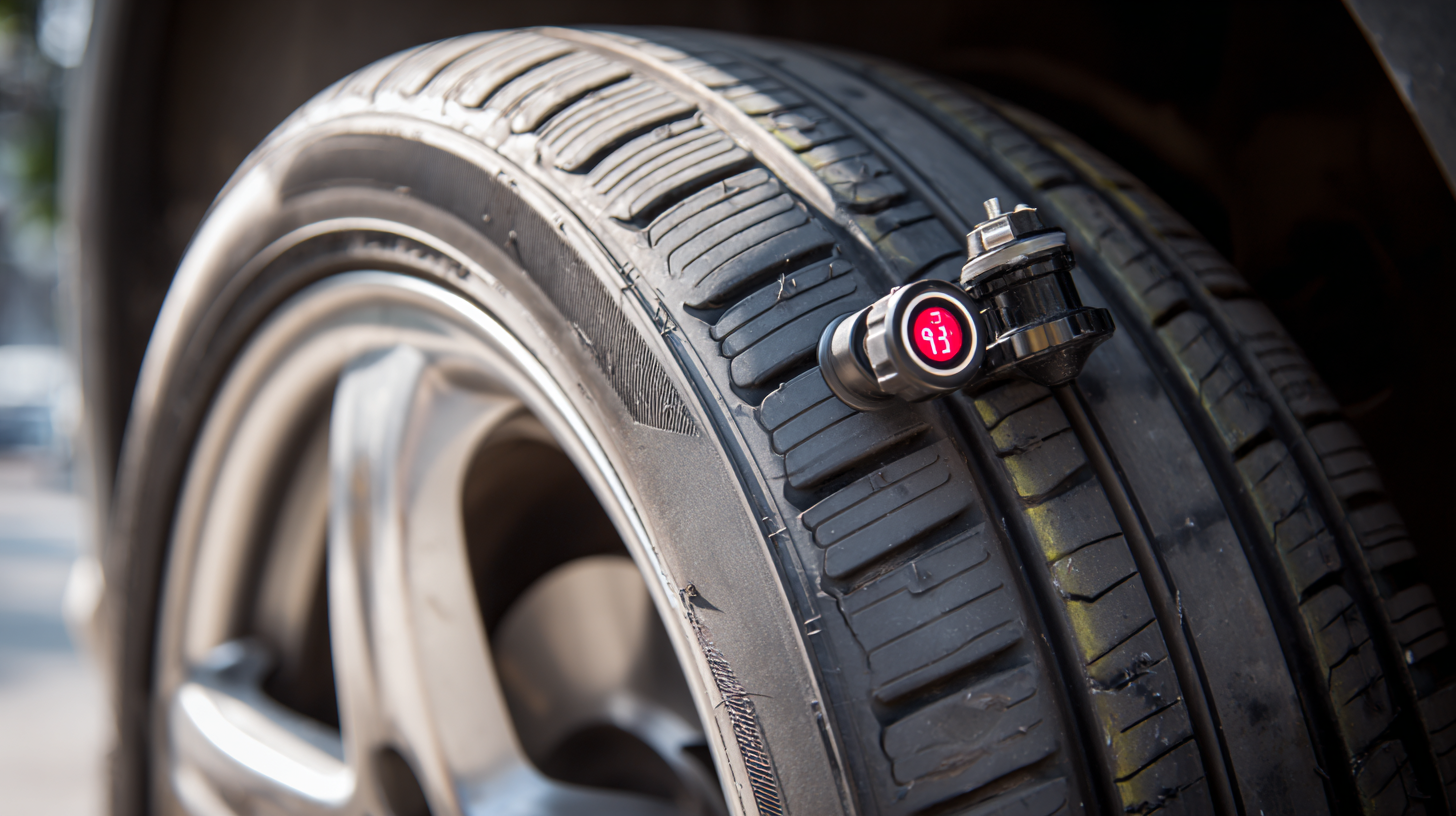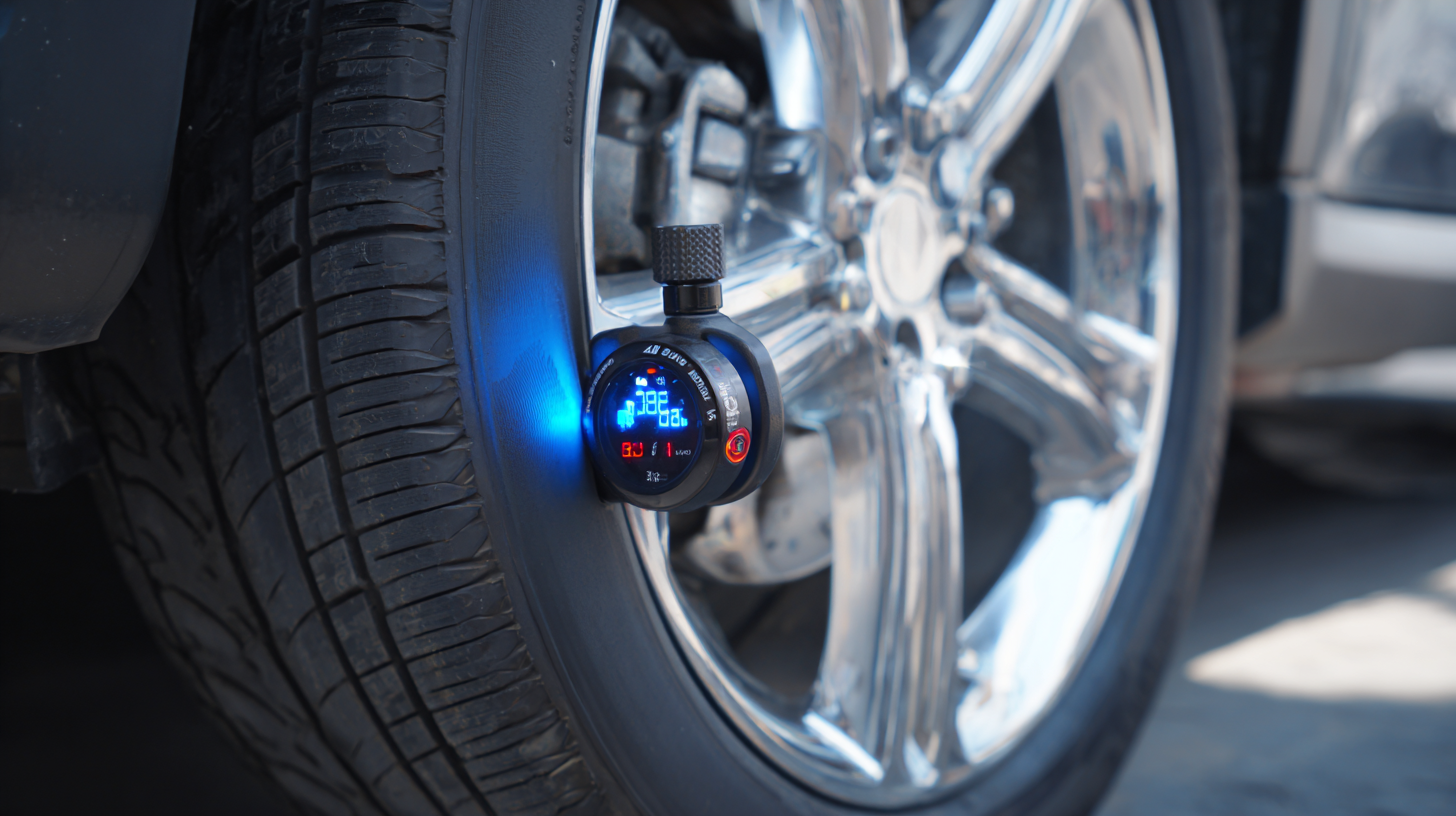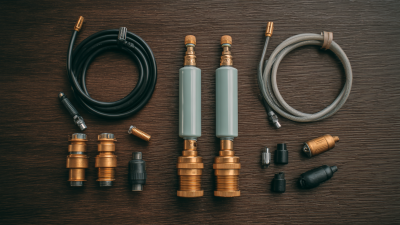Help is here
Understanding TPMS Systems: How Tire Pressure Monitoring Can Save You Money and Enhance Safety
In recent years, the importance of Tire Pressure Monitoring Systems (TPMS) has surged, not only for enhancing vehicle safety but also for optimizing fuel efficiency and reducing maintenance costs. According to the National Highway Traffic Safety Administration (NHTSA), under-inflated tires contribute to 660 fatalities and 33,000 injuries annually in the United States alone. These alarming statistics underscore the critical role that TPMS can play in preventing accidents and extending tire life, ultimately leading to significant savings for vehicle owners.

As highlighted by industry expert Dr. Jane Anderson, a research analyst at the Tire Industry Association, “A well-functioning TPMS system can reduce tire wear by up to 30%, resulting in both safety improvements and financial savings for drivers.” This statement reinvigorates the conversation around the necessity of adopting advanced TPMS technology. By providing real-time tire pressure information, these systems not only enhance driver awareness but also minimize the risks associated with tire blowouts and other related failures.
Moreover, recent studies illustrate that vehicles equipped with TPMS experience an average of 3.3% better fuel efficiency compared to those without. As more automakers include TPMS as standard equipment, understanding how these systems operate and their potential benefits becomes essential for consumers aiming to save money and increase safety on the road. In light of these findings, this article delves deeper into the intricacies of TPMS systems and their vital contributions to modern automotive safety and economy.
Benefits of TPMS: Saving Money with Proper Tire Maintenance
Tire Pressure Monitoring Systems (TPMS) play a crucial role in vehicle maintenance and overall safety. By regularly monitoring tire pressure, these systems help ensure that tires are inflated to the optimal level, which can significantly improve fuel efficiency. Under-inflated tires can increase rolling resistance, leading to higher fuel consumption and unnecessary expenses. With TPMS alerts, drivers can promptly address low tire pressure before it becomes a costly issue.
Moreover, proper tire maintenance facilitated by TPMS contributes to enhanced safety on the road. Maintaining the correct tire pressure reduces the risk of blowouts and improves vehicle handling, especially in adverse weather conditions. This proactive approach not only protects the driver and passengers but also extends the life of the tires. As a result, investing in a TPMS not only provides peace of mind but also translates into long-term savings by reducing the frequency of tire replacements and enhancing fuel efficiency.
Benefits of Tire Pressure Monitoring Systems (TPMS)
Using a Tire Pressure Monitoring System (TPMS) can significantly reduce costs associated with improper tire pressure. This chart illustrates the average costs associated with tire issues due to low or high pressure versus the optimal tire pressure, highlighting the financial benefits of maintaining proper tire health.
Improved Safety Features: How TPMS Enhances Vehicle Safety
 Tire Pressure Monitoring Systems (TPMS) play a crucial role in enhancing vehicle safety by providing real-time monitoring of tire pressure. Properly inflated tires are essential not only for optimal vehicle performance but also for the safety of drivers and passengers. When tire pressure drops below the recommended levels, it can lead to decreased traction, longer stopping distances, and an increased risk of tire blowouts.
TPMS alerts drivers to these issues before they escalate, allowing for timely corrective actions that can prevent accidents.
Tire Pressure Monitoring Systems (TPMS) play a crucial role in enhancing vehicle safety by providing real-time monitoring of tire pressure. Properly inflated tires are essential not only for optimal vehicle performance but also for the safety of drivers and passengers. When tire pressure drops below the recommended levels, it can lead to decreased traction, longer stopping distances, and an increased risk of tire blowouts.
TPMS alerts drivers to these issues before they escalate, allowing for timely corrective actions that can prevent accidents.
In addition to reducing the risk of tire-related incidents, TPMS contributes to overall vehicle safety by promoting better fuel efficiency. Under-inflated tires can increase rolling resistance, leading to higher fuel consumption. By maintaining the correct tire pressure, drivers can enhance their vehicle's efficiency and reduce fuel costs, contributing to both economic savings and environmental benefits. Furthermore, the peace of mind that comes with knowing that a vehicle is equipped with a reliable monitoring system encourages safer driving habits, making TPMS an invaluable feature in modern vehicles.
Understanding Types of TPMS: Direct vs. Indirect Monitoring Systems
Tire Pressure Monitoring Systems (TPMS) play a crucial role in vehicle safety and fuel efficiency, with two primary types: direct and indirect monitoring systems. Direct TPMS employs sensors located inside each tire to measure the air pressure in real-time. This system provides accurate readings, displaying the tire pressure directly on the vehicle's dashboard. If the pressure drops below a predetermined threshold, drivers receive immediate alerts, enabling prompt action to prevent potential blowouts and enhance overall safety.
On the other hand, indirect TPMS does not utilize dedicated sensors in tires but instead relies on the car's existing wheel speed sensors. By monitoring the rotation of each wheel, the system can infer tire pressure changes based on variations in speed. While indirect systems are generally less expensive and easier to maintain, they may not be as precise as direct TPMS. Consequently, drivers may receive warnings after significant pressure loss has occurred, underscoring the importance of regular manual tire pressure checks for optimal performance and safety. Understanding the differences between these two systems can help vehicle owners make informed decisions about their tire maintenance and overall vehicle safety.
| Type of TPMS | How It Works | Cost Savings Opportunity | Safety Benefits |
|---|---|---|---|
| Direct TPMS | Uses pressure sensors in each tire to monitor real-time pressure. | Potentially saves on tire replacement costs by catching issues early. | Enhances safety by warning drivers of low tire pressure. |
| Indirect TPMS | Uses the vehicle’s ABS to monitor tire rotation speed for pressure indication. | Lower initial cost but may lead to higher long-term costs if not accurate. | Provides alerts about potential tire issues based on performance. |
| Both Systems | A combination of direct sensors and indirect monitoring is sometimes used. | Maximizes cost savings through proactive maintenance. | Offers comprehensive safety measures for improved driving experience. |
Cost Savings: The Impact of TPMS on Fuel Efficiency and Tire Longevity
Tire Pressure Monitoring Systems (TPMS) play a crucial role in enhancing vehicle efficiency and safety, but their impact on cost savings through improved fuel efficiency and tire longevity is particularly noteworthy. According to the National Highway Traffic Safety Administration (NHTSA), maintaining proper tire pressure can lead to a fuel economy improvement of around 3.3 percent, which may translate to savings of up to $0.10 per gallon of gas based on average prices. This seemingly small percentage can yield substantial savings for drivers who frequently travel long distances.

In addition to fuel savings, TPMS contributes to prolonging tire lifespan. A study published by the Tire Industry Association indicated that under-inflated tires wear out approximately 25% faster than those with optimal pressure. Properly inflated tires not only reduce rolling resistance, leading to better fuel consumption, but also enhance tread wear, thereby extending the tires' usable life. This dual benefit emphasizes the importance of regularly monitoring tire pressure to ensure optimal performance and cost efficiency, making TPMS an invaluable investment for every vehicle owner.
TPMS Maintenance Tips: Keeping Your Monitoring System in Top Shape
Tire Pressure Monitoring Systems (TPMS) are essential for maintaining optimal tire pressure, which can significantly enhance driving safety and efficiency. According to industry reports, under-inflated tires can lower gas mileage by up to 3%, leading to unnecessary fuel costs. Keeping your TPMS in good condition ensures that your vehicle alerts you to any tire pressure issues before they escalate into more serious problems.
To maintain your TPMS effectively, consider the following tips: First, regularly inspect the sensors; ensure they are clean and functional to provide accurate readings. Second, check the battery life of the TPMS sensors, as they are typically designed to last between 5-10 years. Lastly, properly calibrate your TPMS after tire rotation or replacement to guarantee that it functions correctly. Making a habit of these checks not only extends the life of the monitoring system but also helps you avoid the pitfalls associated with poor tire pressure regulation.
The recent calls for vehicle recalls highlight the importance of having a reliable TPMS. Issues like faulty warning lights can lead to drivers ignoring crucial tire maintenance, increasing the risk of tire blowouts or accidents. Thus, understanding and maintaining your TPMS is crucial for safe and economical driving.
Related Posts
-

Understanding the Importance of TPMS Sensor Kits: Enhancing Road Safety and Tire Longevity
-

Understanding the Importance of Tire Monitor Sensors for Safe Driving
-

Understanding the Importance of Tire Service in Reducing Road Accidents and Enhancing Vehicle Safety
-

Understanding Tire Air Pressure: The Key to Safe and Efficient Driving
-

Exploring the Science Behind Tire Designs for Enhanced Vehicle Performance
-

Understanding the Impact of Tire Valve Sensors on Vehicle Safety and Fuel Efficiency
